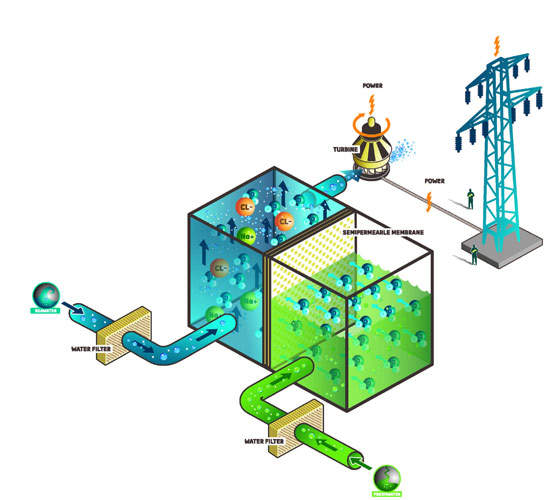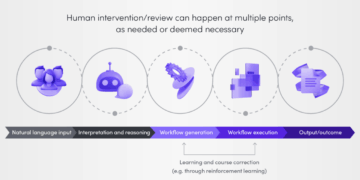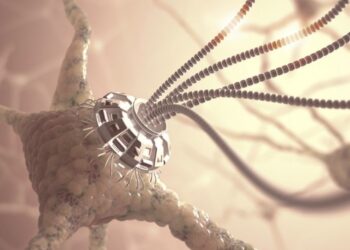In a world increasingly driven by the need for clean, sustainable energy sources, scientists and engineers are looking beyond traditional wind, solar, and hydroelectric power. One promising yet underutilized renewable energy source is beginning to make waves—Osmotic Power, also known as Blue Energy.
Often overlooked in mainstream discussions about renewable energy, osmotic power could become a game-changing solution for the global energy crisis. As technology matures and climate urgency rises, we may be on the brink of an Osmotic Power Revolution—a shift that leverages the natural energy generated where freshwater meets seawater.
This article explores the principles, advantages, challenges, recent innovations, and massive future potential of osmotic energy as the world seeks to diversify its clean energy portfolio.
What Is Osmotic Power?
Osmotic power is a form of renewable energy generated from the difference in salt concentration between freshwater and seawater. When these two types of water come into contact through a semi-permeable membrane, a natural process known as osmosis causes the water to move from the lower to the higher salt concentration side, creating pressure. This pressure can be harvested to drive turbines and generate electricity.
How Osmotic Power Works: The Basics
The underlying science is based on the principle of osmosis, a natural and spontaneous movement of solvent molecules (in this case, water) through a semi-permeable membrane. There are two primary technologies used to convert osmotic pressure into electricity:
A. Pressure Retarded Osmosis (PRO)
This method uses the osmotic pressure differential between saltwater and freshwater to increase pressure on the saltwater side. This pressure drives a turbine, generating electricity.
B. Reverse Electrodialysis (RED)
RED technology uses stacks of membranes to harness the chemical potential difference between ions in freshwater and saltwater. The ion movement between positively and negatively charged membranes creates a usable electric current.
C. Capacitive Mixing (CapMix)
Still in the early stages, this technique relies on the charging and discharging of electrodes in salt concentration gradients to generate power.
Why Osmotic Power Matters
With more than 40% of the world’s population living near coasts, estuaries and deltas offer an untapped energy resource. Unlike intermittent energy sources like wind and solar, osmotic power can generate continuous and predictable electricity, making it suitable for base-load power supply.
Key Advantages:
A. Zero Emissions – No greenhouse gases or pollutants released
B. Consistent Output – Provides stable, 24/7 energy generation
C. Vast Global Potential – Billions of kilowatts could be harvested worldwide
D. Minimal Land Use – Compact facilities near river mouths and coasts
E. Scalable and Modular – Small units for communities or larger for grid integration
Global Osmotic Power Potential
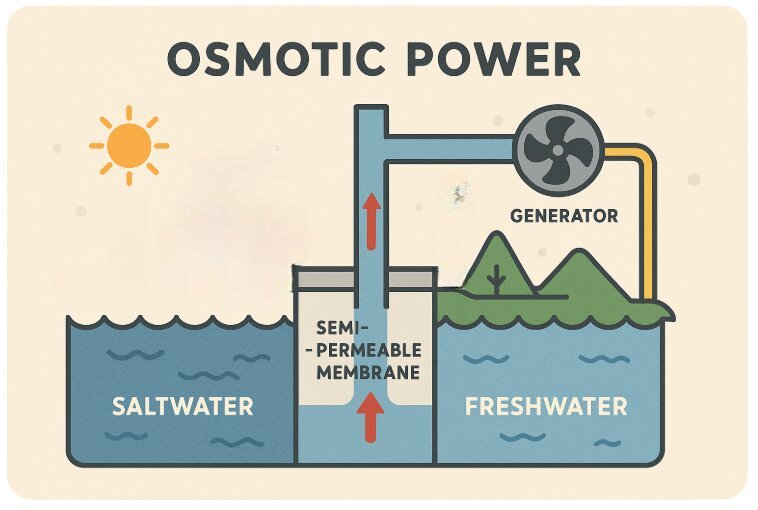
According to estimates by the International Renewable Energy Agency (IRENA), osmotic power could provide up to 1,650 terawatt-hours (TWh) per year, which is roughly equivalent to the current electricity consumption of all of Europe.
Key areas rich in osmotic energy potential include:
A. Amazon River Delta
B. Ganges-Brahmaputra Delta
C. Nile River Estuary
D. Yangtze River Mouth
E. Mississippi River Delta
Even smaller estuaries and wastewater treatment facilities could serve as localized sources of blue energy.
Breakthrough Innovations in Osmotic Power
1. Statkraft’s Pilot Plant (Norway)
In 2009, Norwegian company Statkraft built the world’s first osmotic power prototype. Though eventually shut down in 2013 due to cost and efficiency challenges, the project laid the groundwork for ongoing global research.
2. REDstack (Netherlands)
This Dutch startup developed a working RED plant on the Afsluitdijk, a famous dam. Their system demonstrates promising scalability and has achieved record efficiency in ion exchange membranes.
3. MIT’s Nanotechnology Membranes
Researchers at MIT have created membranes using 2D materials like graphene oxide, dramatically reducing resistance and increasing osmotic energy output.
4. China’s Coastal Power Initiatives
China has invested heavily in blue energy research. Projects along the Yangtze and Pearl River deltas explore osmotic power’s role in a decarbonized energy grid.
5. Wastewater Osmotic Hybrid Plants
New hybrid facilities combine osmotic power with wastewater treatment, creating an eco-efficient way to clean water while generating electricity.
Industries and Applications
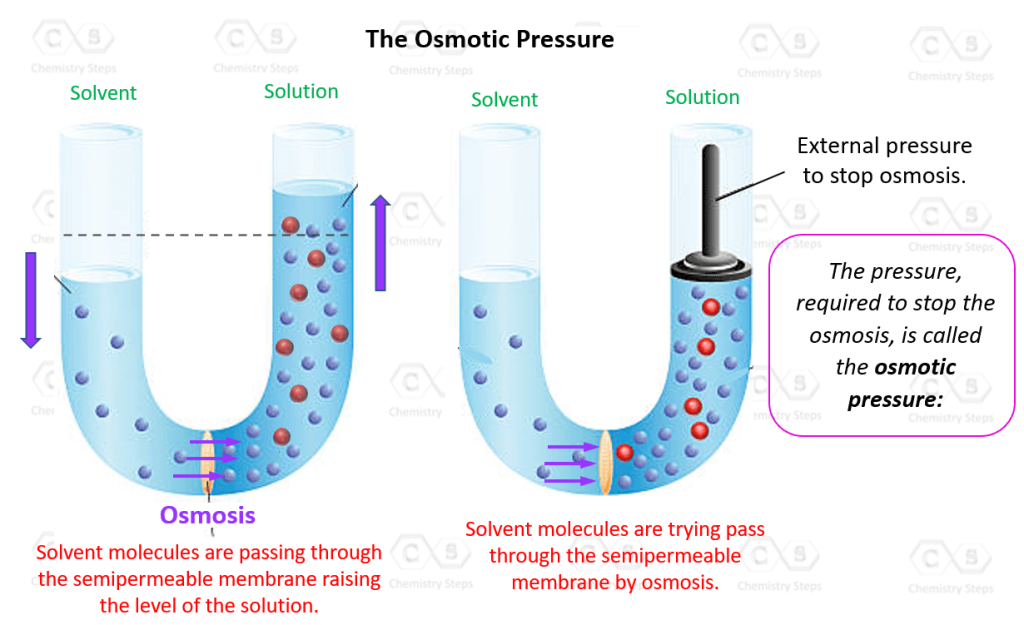
Osmotic power is highly adaptable and suitable for a wide range of industries and environments.
A. Grid Power Supply
Large-scale osmotic plants can feed directly into national or regional grids, offering renewable base-load power.
B. Remote Coastal Communities
Osmotic systems can supply energy to remote villages without reliable electricity access, reducing diesel dependence.
C. Desalination and Water Utilities
By coupling with desalination plants, osmotic power can reduce energy costs and even power the desalination process itself.
D. Maritime and Port Operations
Shipping ports can install blue energy units to power cranes, lighting, and equipment sustainably.
E. Data Centers Near the Coast
Coastal data centers, which require vast amounts of electricity and cooling, can use blue energy as a direct power source.
F. Military and Disaster Relief
Portable osmotic generators could supply power in emergencies or to deployed military units in coastal zones.
Challenges Facing Osmotic Power Development
While promising, osmotic power is not without hurdles:
A. Membrane Cost and Durability
Current membranes are expensive, degrade over time, and foul easily when exposed to natural water sources.
B. Low Power Density
Compared to wind or solar, osmotic systems produce less power per square meter, necessitating larger setups for high output.
C. Saltwater and Freshwater Access
Optimal locations are limited to estuaries or places with controlled freshwater outflows.
D. Environmental Considerations
Intake and discharge of water must be carefully managed to avoid harming local ecosystems.
E. Upfront Infrastructure Costs
Initial setup costs are high, though long-term operating costs are minimal.
Emerging Solutions to Overcome Barriers
A. Advanced Nanomaterials
Use of graphene, MXenes, and carbon nanotubes are improving membrane conductivity and lifespan.
B. Bio-Inspired Membrane Designs
Nature-inspired filtration systems, modeled on aquaporins (water channel proteins), can enhance water permeability.
C. Hybrid Energy Systems
Combining osmotic power with solar or wind improves reliability and energy density.
D. Modular Deployments
Smaller, container-based systems reduce cost and ease integration with existing coastal infrastructure.
E. AI-Optimized Operations
Artificial intelligence models can monitor flow rates, membrane performance, and power output in real time.
The Road to Commercialization
Experts believe that within the next decade, osmotic power may transition from prototype to mainstream energy source, driven by:
Membrane Cost Reductions
Government Incentives for Renewables
Climate-Driven Policy Mandates
Rising Demand for Decentralized Energy
Urbanization of Coastal Populations
Countries like the Netherlands, Japan, South Korea, and the U.S. have begun integrating osmotic energy into long-term renewable energy strategies.
The Future: Blue Energy in 2040
By 2040, osmotic power could play a pivotal role in the global energy mix:
A. Smart Cities with Energy-Generating Rivers
Urban rivers equipped with osmotic modules powering streetlights, sensors, and public buildings.
B. Autonomous Osmotic Grids
Floating platforms supplying clean energy to island nations and disaster-prone areas.
C. Blue Data Centers
Coastal AI data centers fully powered by osmotic flow and cooled by seawater.
D. Ocean-Powered Infrastructure
Bridges, ports, and buildings using osmotic systems for off-grid energy independence.
E. Global Estuarine Networks
Linked networks of osmotic generators producing regional power and reducing reliance on fossil fuels.
Conclusion: A Clean Energy Source Hidden in Plain Sight
The Osmotic Power Revolution is not merely about scientific curiosity—it is about recognizing the untapped potential of nature’s most basic interactions. Every day, trillions of liters of freshwater meet seawater with zero benefit to humanity. With the right technology, that encounter could power cities, factories, and homes—all without emissions or noise.
In a century defined by the fight against climate change, osmotic power may rise as the silent giant of renewables—a source that is endlessly abundant, intrinsically clean, and astonishingly consistent.
The tide has turned. Blue energy is rising.

